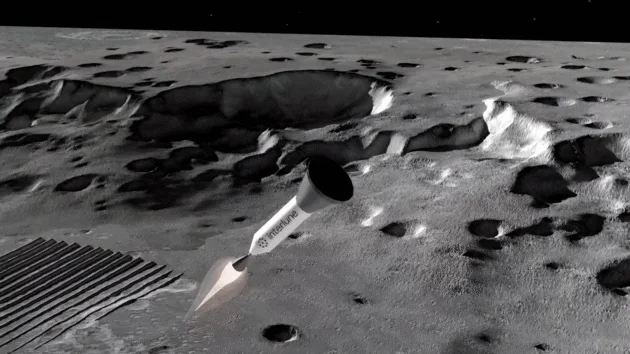
Interlune Aims to Mine Lunar Helium-3: A Giant Leap for Earth’s Tech?
Seattle-based startup Interlune is making waves in the space industry with its ambitious plan to mine helium-3 on the moon and bring this precious resource back to Earth. This venture has the potential to revolutionize various high-tech sectors, including quantum computing and medical imaging. Is this science fiction becoming reality?
Lunar Helium-3 Extraction: The Vision
Interlune recently unveiled a full-scale prototype of a lunar excavator in collaboration with Vermeer Corp. This excavator is designed to process a staggering 100 metric tons of moon dirt per hour, extracting helium-3 before redepositing the remaining material back onto the lunar surface. 
Deals in Place: Securing the Future of Helium-3
The company has already inked agreements to supply lunar helium-3 to the U.S. Department of Energy and Maybell Quantum Industries by 2029. Maybell Quantum plans to use helium-3 in their dilution refrigerators, essential for cooling quantum computing devices to near absolute zero. Corban Tillemann-Dick, founder and CEO of Maybell Quantum, believes that "Helium-3 will fuel a fundamental transformation in computing."
What is Helium-3 and Why is it Important?
Helium-3 is an isotope rarer than the more common helium-4. It has numerous high-tech applications, including:
- Quantum Computing: Crucial for cooling quantum computers.
- Fusion Power: A potential fuel source for future fusion reactors.
- Medical Imaging: Used in specialized medical scans.
- National Security: Applications in weapons detection.
While scarce on Earth, helium-3 is abundant on the moon due to solar wind exposure, making lunar mining a viable option.
The Team Behind Interlune: A Wealth of Space Expertise
Interlune boasts a team with impressive credentials. Co-founder Gary Lai, formerly the chief architect of Blue Origin's New Shepard rocket, even journeyed to space on the vehicle in 2022. CEO Rob Meyerson, another Blue Origin alumnus, brings a wealth of leadership experience from his tenure as the company's president.
Testing and Future Missions
Interlune has ambitious plans for testing its hardware on the moon, including three missions over the next five years. Their first mission, Crescent Moon, scheduled for late 2025, will involve sending a hyperspectral camera to the lunar south pole. Following missions, like Prospect Moon and Harvest Moon, will validate helium-3 concentration and demonstrate the end-to-end extraction process.
The Road Ahead
Interlune's endeavors are not without challenges. Operating equipment on the moon demands exceptional reliability and performance standards. However, with strong partnerships and a clear roadmap, Interlune is poised to play a pivotal role in shaping the future of lunar resource utilization.

The Future of Lunar Mining
Interlune's initiative raises important questions: Could lunar resource extraction become a sustainable and commercially viable industry? What impact will it have on technological advancements and global economies? Share your thoughts in the comments below!